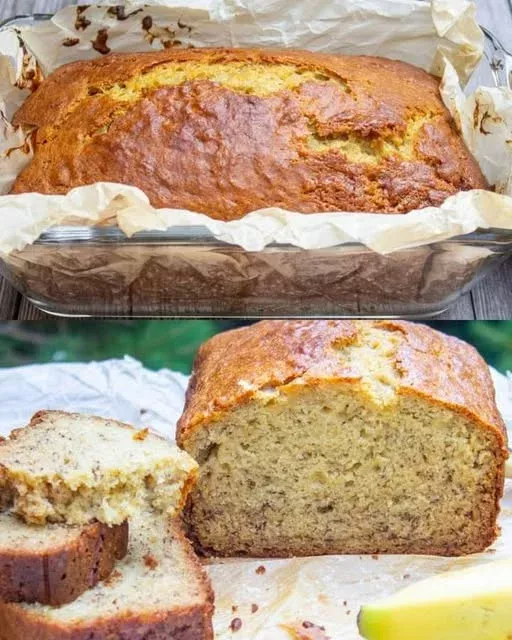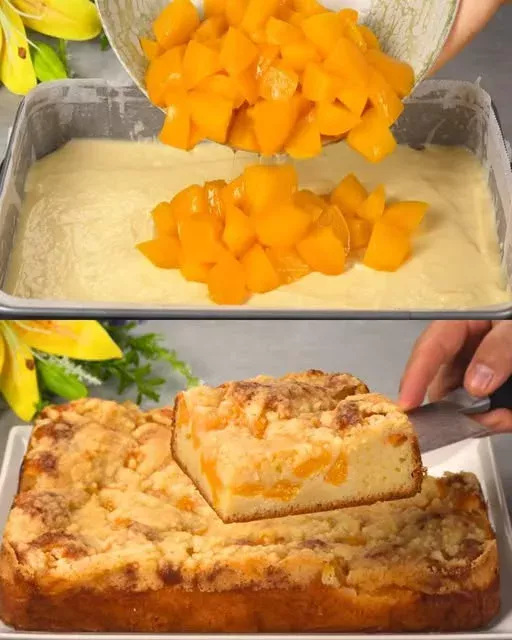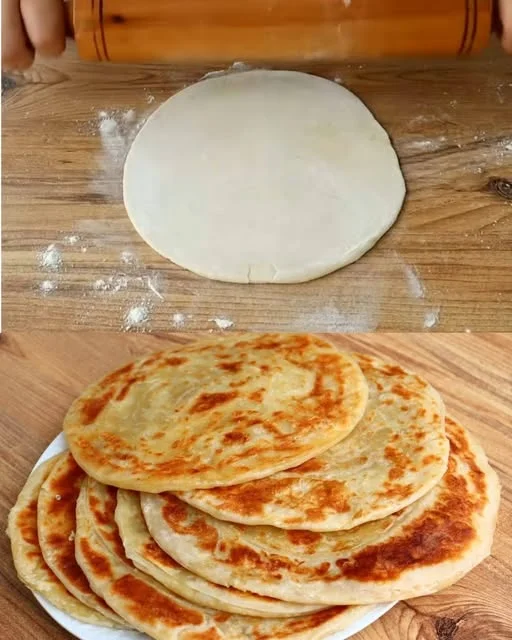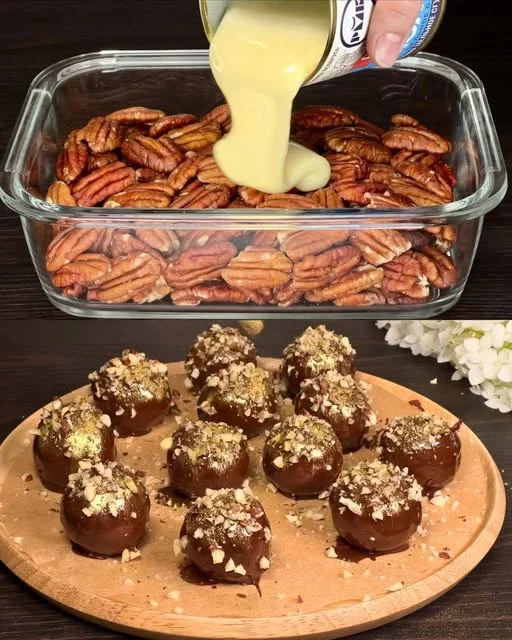The kitchen has always been a sanctuary for me. Growing up, my grandmother used to invite me into her kitchen to help her bake, teaching me not just how to cook, but how to appreciate the love and care that went into making food. It was during one of those cherished afternoons that I learned the power of simple ingredients coming together to create something extraordinary. Over the years, I have reimagined those recipes to align with my healthier lifestyle. The desire to enjoy comfort food without compromising my wellness goals led me to create this oatmeal banana brownie recipe – a recipe that combines the richness of bananas, the heartiness of oats, and the satisfying crunch of walnuts, all while keeping it light and low in calories.
What started as a personal experiment to create a healthier dessert has evolved into one of my favorite go-to recipes. These oatmeal banana brownies are not just a treat; they are a reminder that indulgence doesn’t have to be packed with guilt. Whether you’re watching your weight or just looking for a healthier alternative to traditional brownies, this recipe is perfect for anyone who loves to satisfy their sweet tooth without sacrificing their health goals.
Why This Recipe Works: A Perfect Balance of Taste and Nutrition
At the heart of this recipe is the perfect balance of wholesome ingredients. Unlike many traditional brownies that rely on butter, sugar, and refined flour, these brownies are crafted from ingredients that nourish your body. Oatmeal serves as the base, providing fiber that supports digestion and helps keep you feeling full for longer. Bananas not only contribute natural sweetness but also offer potassium and vitamins that boost energy and maintain healthy blood pressure.
The addition of walnuts adds a satisfying crunch while providing healthy fats, protein, and omega-3 fatty acids, making these brownies a much better choice than the typical dessert. When combined with cocoa powder and a hint of vanilla extract, the result is a decadent treat that won’t leave you feeling sluggish or guilty.
What’s more, these brownies are easy to make, require no special equipment, and can be enjoyed fresh or stored for later use. Whether you’re looking for an energy boost after a workout, a quick snack, or a dessert to satisfy your cravings, these brownies check all the boxes.
Ingredients:
| Ingredient | Quantity |
|---|---|
| Oatmeal | 150g (5 ounces) |
| Milk | 150ml (5 fl oz) |
| Eggs | 2 |
| Bananas (mashed) | 2 |
| Vanilla extract | 1 teaspoon |
| Sugar-free cocoa powder | 20g (0.7 ounces) |
| Baking powder | 5g (0.18 ounces) |
| Salt | 1 pinch |
| Vegetable oil (for greasing) | As needed |
| Walnuts (chopped) | 30g (1 ounce) |
Instructions:
- Preheat your oven to 180°C (350°F) and lightly grease a baking pan with vegetable oil.
- In a large bowl, mix together the mashed bananas, eggs, vanilla extract, and milk until smooth.
- Add in the oatmeal, sugar-free cocoa powder, baking powder, and salt. Stir until the mixture is well combined.
- Fold in the chopped walnuts for a delightful crunch.
- Pour the batter into the prepared baking pan and spread it evenly.
- Bake for 25-30 minutes, or until a toothpick inserted into the center comes out clean.
- Let the brownies cool completely before cutting them into squares. Enjoy these guilt-free treats!
Nutritional Information (per serving):
| Nutrient | Amount |
|---|---|
| Calories | 150 kcal |
| Carbs | 20g |
| Protein | 4g |
| Fat | 6g |
| Fiber | 3g |
| Sugar | 6g |
Health Benefits of Oatmeal Banana Brownies
Oatmeal is the star ingredient in this recipe, and for good reason. Not only is it a great source of fiber, but it also has numerous health benefits, including lowering cholesterol, supporting heart health, and stabilizing blood sugar levels. The oats in this recipe act as a binder, holding the brownies together without the need for any refined flour. This makes the brownies naturally gluten-free (as long as you use certified gluten-free oats) and an ideal choice for anyone with dietary restrictions.
Bananas, another key ingredient, are packed with potassium, which is essential for heart and muscle function. They also provide an energy boost, making these brownies perfect for a mid-afternoon snack. With only a touch of sugar from the cocoa powder and the bananas themselves, these brownies are not overly sweet, keeping your blood sugar levels balanced.
Additionally, walnuts provide healthy fats that promote brain health and reduce inflammation, making these brownies a great choice for overall wellness. The cocoa powder, while adding that rich, chocolatey flavor, also provides antioxidants that help fight free radicals and support heart health.
Frequently Asked Questions (FAQs)
Can I make these brownies vegan?
Yes, this recipe can easily be adapted to a vegan version by substituting the eggs with a flax egg (1 tablespoon ground flaxseed mixed with 3 tablespoons water) and using a non-dairy milk such as almond or oat milk. The rest of the ingredients are already plant-based, making this a great option for those following a vegan diet.
Can I use another type of nut instead of walnuts?
Absolutely! Walnuts provide a rich texture and taste, but if you’re not a fan or if you have an allergy, you can substitute them with almonds, pecans, or even cashews. Just chop them finely to ensure they mix well into the batter.
How long will these brownies stay fresh?
These brownies can be stored in an airtight container at room temperature for up to three days. If you want to keep them for a longer period, they can be frozen. Just wrap them individually in plastic wrap and store them in a freezer-safe container for up to a month.
Can I add other ingredients to customize the recipe?
Of course! These brownies are versatile and can be customized in many ways. You could add dried fruit, such as raisins or cranberries, or even incorporate a spoonful of peanut butter for extra flavor. Adding a sprinkle of cinnamon or a pinch of sea salt on top before baking can also elevate the taste.
Are these brownies suitable for weight loss?
Yes, this recipe is great for those looking to maintain a healthy diet while still enjoying a dessert. The high fiber content from the oats and bananas helps to curb cravings, and the use of wholesome ingredients ensures that you’re nourishing your body while indulging your sweet tooth. However, moderation is key, and these brownies should be part of a balanced diet.
Can I use ripe bananas for this recipe?
Ripe bananas are actually ideal for this recipe! The more ripe your bananas, the sweeter your brownies will naturally be. Plus, the soft texture of ripe bananas will blend better into the batter, making the brownies moist and flavorful.
How to Make These Brownies Even Healthier
While this recipe is already a healthier alternative to traditional brownies, there are a few tweaks you can make to further boost its nutritional value.
- Add protein powder: For an extra protein boost, you can add a scoop of your favorite protein powder to the batter. This will help keep you feeling fuller for longer and provide an extra nutritional punch.
- Use almond flour: If you’re looking to make the recipe even lower in carbs, substitute half of the oats with almond flour. This will reduce the carbohydrate content while adding healthy fats.
- Sweeten naturally: Instead of using sugar-free cocoa powder, you could opt for a natural sweetener like stevia or maple syrup. Just keep in mind that this will alter the texture slightly, so you might need to adjust the amount of flour or oats.
A Recipe for Any Occasion
Whether you’re trying to eat cleaner, lose weight, or simply want a healthier alternative to a traditional dessert, these oatmeal banana brownies are a perfect solution. They make an excellent snack for busy afternoons, a delicious breakfast when you’re craving something sweet, or a great post-workout treat. With minimal ingredients and a simple process, these brownies are both practical and satisfying.
I often make these brownies on a lazy Sunday afternoon, when I want something indulgent but don’t want to overdo it with sugar and calories. They remind me of the joy that comes from simple, homemade treats, and how nourishing food can be both satisfying and healthy.
Conclusion: A Delicious, Guilt-Free Treat
This oatmeal banana brownie recipe is more than just a healthy dessert – it’s a testament to the fact that you don’t need to sacrifice taste for health. By using simple, wholesome ingredients like bananas, oatmeal, and walnuts, you can create a treat that is both delicious and nutritious. Whether you’re baking for yourself or for friends and family, these brownies are sure to be a hit. They are the perfect example of how healthy eating can be simple, fun, and most importantly, satisfying.
So, the next time you’re craving something sweet, reach for these oatmeal banana brownies – your body will thank you, and your taste buds will be delighted.
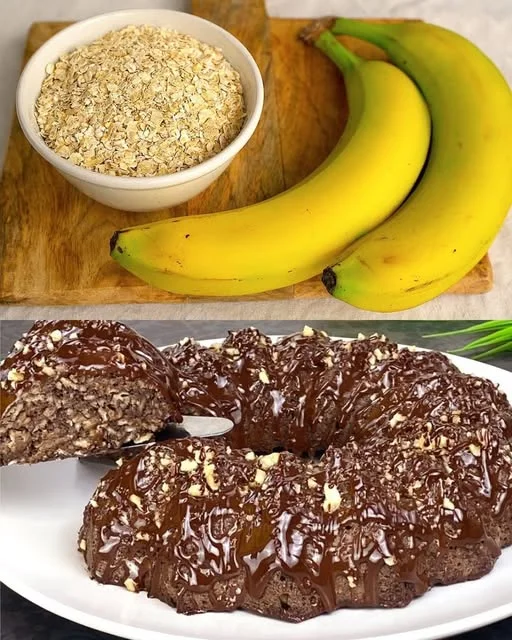
Decadent Oatmeal Banana Brownies – A Guilt-Free Indulgence
Ingredients
Method
- Preheat your oven to 180°C (350°F) and lightly grease a baking pan with vegetable oil.
- In a large bowl, mash the bananas and then add the eggs, vanilla extract, and milk. Mix until smooth.
- Add the oatmeal, sugar-free cocoa powder, baking powder, and a pinch of salt to the bowl. Stir until well combined.
- Fold in the chopped walnuts for added crunch and texture.
- Pour the batter into the prepared baking pan, spreading it evenly with a spatula.
- Bake for 25-30 minutes, or until a toothpick inserted into the center comes out clean.
- Allow the brownies to cool completely before cutting into squares and serving.
Notes
- Storage: These brownies stay fresh for up to 3 days in an airtight container at room temperature. They can also be frozen for up to a month if wrapped individually in plastic wrap.
- Customizing: Feel free to add dried fruits like cranberries or raisins, or even a sprinkle of cinnamon or nutmeg for extra flavor. For a chocolatey twist, mix in some dark chocolate chips or cocoa nibs.
- Vegan Option: To make these brownies vegan, replace the eggs with flax eggs (1 tablespoon ground flaxseed + 3 tablespoons water) and use plant-based milk such as almond or oat milk.



